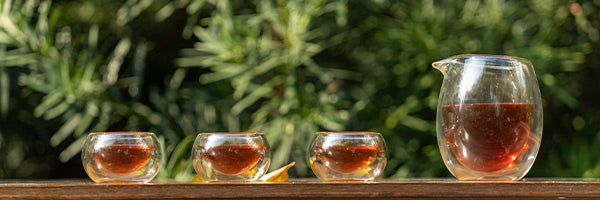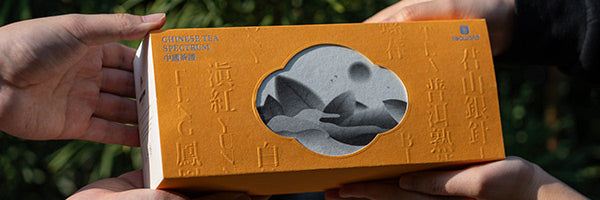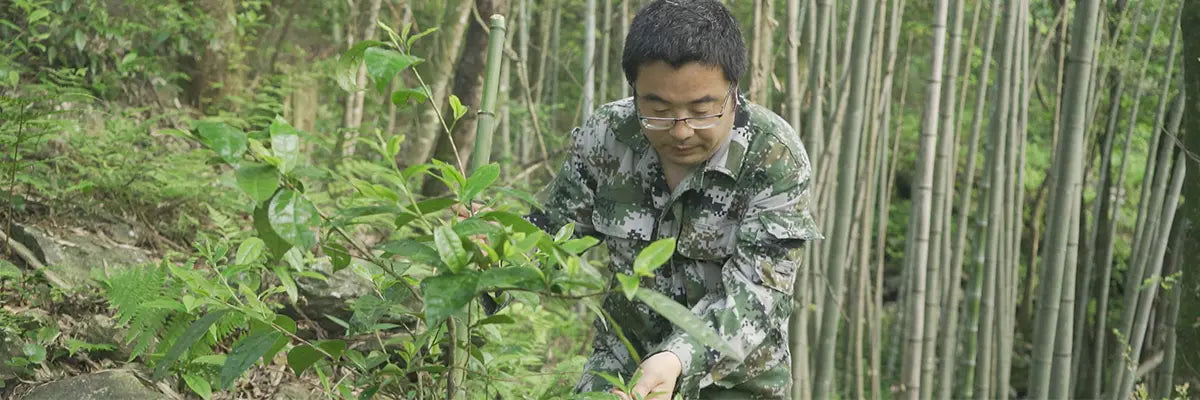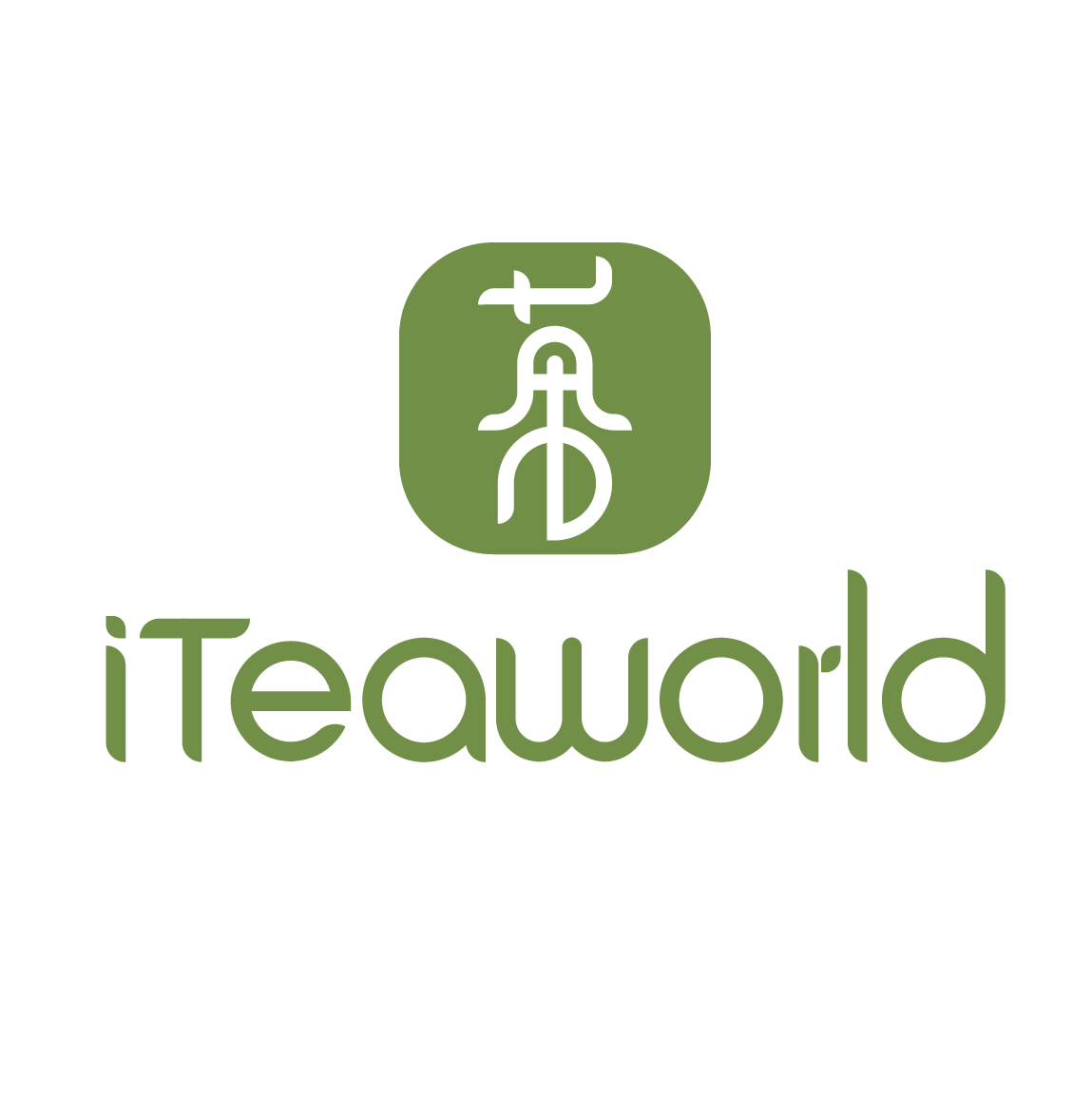Если вы любитель чая, вы, вероятно, сталкивались с уникальными вкусами чая улун . Но есть одна категория, которая выделяется среди остальных: Уи Яньча. Почитаемый как «король улунов», Уи Яньча — это сокровище из гор Уи, расположенных в китайской провинции Фуцзянь. Известный своим особым «очарованием скал» или янь юнь , этот чай выращивается на богатой, насыщенной минералами почве природного заповедника гор Уи. Результат? Чай с глубокими, сложными вкусами и историей, охватывающей столетия.
Среди множества разновидностей Уи Яньча, Da Hong Pao , Wuyi Shuixian (Водяной дух) и Wuyi Rougui (Корица) — одни из самых известных. Сегодня давайте оставим Da Hong Pao в стороне и погрузимся в два других — Shuixian и Rougui — которые представляют собой основу этой изысканной категории чая.

1. Внешний вид сухих листьев
- Wuyi Shuixian: Этот чай производится из небольшого вида деревьев с заметно большими листьями. Чем старше дерево, тем выше качество чая, и листья обычно собирают с помощью метода, известного как «открытый сбор». Эта техника заключается в срывании 3–4 листьев, при этом почка остается нетронутой. В результате получаются более крупные, толстые листья, которые также более нежные, чем Rougui . Эти листья создают уникальную текстуру и вкус, которые ценятся любителями чая, и это именно то, что вы найдете в Wuyi Shuixian от i Teaworld . Этот исключительный чай передает суть своего наследия и мастерства, предлагая вкус настоящих гор Уи.
- Уи Руги: Rougui происходит от кустарникового сорта с более мелкими овальными листьями. Техника сбора урожая обычно включает сбор полностью зрелых листьев, что приводит к более зрелым, компактным листьям по сравнению с Shuixian . Эти листья обладают более крепким и интенсивным вкусом, что является одной из причин, по которым Rougui заслужил репутацию смелого и сложного.
2. Аромат сухих листьев
Хотя эти два чая используют схожие методы обработки — около 60%-70% окисления и разную степень обжарки — их сухие ароматы часто трудно различить. Оба чая источают этот фирменный аромат Уи, но степень обжарки может немного изменить аромат. Если вы исследуете мир Уи Яньча, пробуете ли вы Уи Шуйсянь или Уи Ругуй из i T eaworld, вы заметите тонкие различия в их ароматах, которые улучшат ваш опыт заваривания.

3. Метод заваривания
При заваривании Уи Яньча я предпочитаю использовать классическую белую фарфоровую гайвань с кипящей водой (100°C / 212°F). Вот мой основной метод:
- Сначала быстро промойте чай, чтобы пробудить листья.
- Для второго заваривания настаивайте в течение 8–10 секунд, чтобы уловить основные вкусы чая. Wuyi Yancha, как и Wuyi Rougui от i Teaworld , не следует заваривать слишком долго — чрезмерное настаивание может сделать его горьким.
- Для заварок 3–5 настаивайте около 15 секунд, а для заварок 6–10 увеличьте время настаивания до 20–30 секунд. Уи Яньча, особенно Уи Шуйсянь , невероятно устойчивы и могут выдерживать многократные заваривания, сохраняя при этом свой богатый, тонкий вкус.

4. Профиль вкуса
В Китае чаи часто сравнивают с личностями, и Wuyi Yancha не является исключением. Два чая, которые мы обсуждаем — Shuixian и Rougui — каждый привносит что-то уникальное в этот список:
- Wuyi Rougui: смелый, интенсивный и пряный, Rougui часто сравнивают с сильной мужской энергией. Его вкусовой профиль включает в себя острую, стимулирующую пряность, которая задерживается на нёбе, сопровождаемую тонкой сладостью в послевкусии. Это идеальный выбор для тех, кто любит смелый и жгучий чай. На самом деле, Уи Ругуи из Teaworld был создан именно для этого — чая, который одновременно возбуждает и успокаивает с каждым глотком.
- Wuyi Shuixian: С другой стороны, Shuixian предлагает более мягкий, более мягкий опыт. Часто описываемый как обладающий нежным, женственным очарованием, чай отличается тонким балансом цветочных и древесных нот, которые мягко задерживаются на нёбе. Он успокаивает, его легко пить, и он идеально подходит для расслабляющей чайной сессии. Wuyi Shuixian от i Teaworld воплощает этот мягкий, элегантный профиль вкуса, что делает его идеальным выбором для любителей чая, ищущих утонченную, но глубоко удовлетворяющую чашку.
-
Различия во вкусе этих двух сортов чая можно объяснить не только сортом растения, но и способом его обработки:
- В процессе окисления Шуйсянь осторожно встряхивают пять раз, совершая каждый раз 600 оборотов.
- Однако Rougui подвергается более интенсивному процессу встряхивания — 6–8 раундов встряхивания, с каждым раундом увеличивая количество оборотов. Эта более жесткая обработка выявляет более глубокие, пряные вкусы Rougui , делая его чаем с более сильным ударом.

Мои предпочтения
Лично я склоняюсь к Wuyi Shuixian . Его мягкий, стойкий аромат и изысканный вкус создают идеальную атмосферу для расслабленного чаепития. С другой стороны, смелость и пряность Rougui иногда могут быть для меня слишком стимулирующими. Однако я могу понять, почему некоторые люди предпочитают крепкий, бодрящий удар, который предлагает Rougui .
А как насчет вас? Вас тянет к нежному, стойкому аромату Shuixian или вам нравится крепкий, пряный удар Rougui? Если вы еще не пробовали Wuyi Shuixian или Wuyi Rougui от i Teaworld , я настоятельно рекомендую попробовать. Эти чаи предлагают идеальное введение в мир Wuyi Yancha и демонстрируют исключительное мастерство, которое вкладывается в каждую партию.













